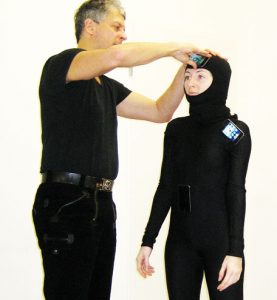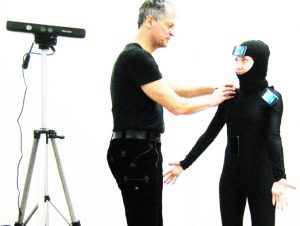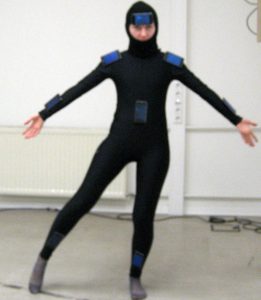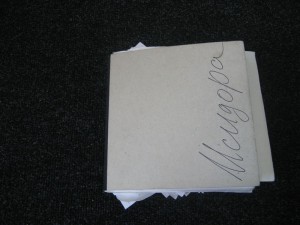[nggallery id=54]
MPM: In the past few months you’ve been participated in several international group exhibitions. What are the shows and could you tell us more about the works that you’ve exhibited?
IF: I have exhibited in group exhibitions within the gallery Primo Piano LivinGallery in Lecce, Italy and in the international art event that is a nonprofit initiative of curator Kisito Assangni under the title ‘Time is Love’, whose fifth edition is being implemented in 2012 . in various countries around the world, Italy, Germany, America, Britain, Cyprus, France, Ukraine, Romania and Norway.
The works that I exhibit are the works of various media and content. The videos shown are “Stop smoking”, “Love Parade” or “Sex, Lies and Video Tapes”, which have arisen as a reaction to current events in Belgrade 2009. and are accompanied by rock and roll music and with music from the TV series ‘Otpisani (written off)’ in the work “Stop smoking”; where a parallel event represented a small group of people protest in Republic Square in front of the flag with an inscription Stop NATO Fascism and with my action, such action by which the protest is placed in parallel relationship with subtraction of cigarettes out of the hands and mouths of people who sit around in cafes, which happened quickly in the rhythm of musical themes, and in the spirit of a hidden camera. It is shown a surreal situation through humor and irony.
Cooperation with the gallery Primo Piano LivinGallery for me is personally interesting because of their themes of exhibitions and titles as Inside / Outside, Language is a virus, Eye of the Storm, The Merchant of Dreams, Patterns and Password and Geoforms. The exhibition Password example allowed the viewer to reconsider the endless imaginable possibilities of relationship between words and pictures. Through the interpretation of several words in alphabetical order from artists were asked to represent them in the form of postcards, designed as a Dadaist game in which the creativity of each artist comes as fantastic visual vocabulary of the human condition of 21st century. A-Actions, B-Biodiversity, C-Censure, D-Disenchantment, E-Emergence, F-Faith, G-Globalization, H-Human, I-Innocence/Identity, J-justice, K-killers, L-Love, M-Memory, N-Nostalgia, O-Otherness , P-Power, Q-Quality, R-Relation, S-Skin, T-Transcendence,U-United, V-Virtuality, W-War, X-generation X, Y-Yin/yang, Z-Zoo. For this occasion I made digital images of prints with the emphasis on achromatic colors, black and white, and they are a response to the word Action, Nostalgia, Emergence, Virtuality, Quality.
[nggallery id=55]
MPM: How did the cooperation with Kisito Assangni and Dores Sacquegna start? Why do you think the two videos draw special interests, “Stop Smoking” and “Sex, Lies and Videotapes”?
IF: With Kisito Assangni I started co-operation in 2010th with participation on the third part of ‘Time is love’ in Berlin. On an open invitation I sent the work “Love Parade” that was included in the selection. With “Sex, Lies and Video Tapes” I participate in the fifth edition of ‘Time is love’ that is realized during the 2012th
The work has several layers of meaning, deals with the appearance, not reality through a digital image, but raises questions of interpretation of an nude as one of the most common motif in the art history, gender issues and their relationships in representative forms of appearance, the potentiality of sexual energy, and manipulation through the mass media as well as development of digital technology.
Dores Sacquegna is the curator of Primo Piano LivinGallery from which I was invited to exhibit in December 2010. year for the exhibition Inside / Outside, dealing with the transformation of the urban landscape, where landscape design archives relating to the new culture of places, understood as a context of strong and clear specific networks within the meaning of where actions of people become cultural factors, a value that reflects the “exchange value” in social action, public phenomenon, therefore, not an individual but the subjective meaning of action in everyday life, work, relationships and life. Inside / Outside the exhibition deals with the landscape that is not just the glance of landscape as a place or daily environment, but also as an interior landscape, the state of visibility and invisibility of things in life.
The content of the video work “Stop smoking” which is shown in gallery is appropriate to the context, outlines the landscape, urban and social change, interaction of author in public space with people, as well social performance in the same public space, and the subjective perception of the environment, atmosphere, exterior, urban landscape, the reconstruction of that landscape in 2009th on the main square in Belgrade, surreal landscape that reflects the character of a state of change.
MPM: You have a rich video production, especially in recent years. Tell us more
about your relationship with the camera? Why video?
IF: I use different media in the expression, interpretation, content and design of ideas that I want to introduce, and it’s interesting for me the connection between drawings and paintings with digital media, the relationship between manual and digital media, which I embody in some of installations. The camera may be the quickest way to catch interesting moments around me, often using handhold digital camera, so it could be felt in works the presence of those who work behind the camera, the one who takes a direct way, and during editing I choose and freely combine video sequences in the making certain forms and contexts of work, unforeseen and unexpected compounds in which I often use music which with its content follows the idea of the video.
Often, those are rock an ‘roll songs that evoke the period of the sixties of the 20th century, and bring them in connection with the present and the time of ‘now’. In relation to camera it is important to me to make video work using different approaches as opposed to the idea that the work involve, sometimes it’s the form of interview dealing with issue of time, but also the broader context of the question “What is Contemporary?”, where the emphasis is on the concept that involves a huge number of participants, artists, curators and art historians, members of international and local art scene, and sometimes those are the real short form video works focusing on the editing of video sequences, where the color, rhythm, composition, time, length of frames, their repetition, acceleration or deceleration, the tools that I use to play an discover interesting solution to the digital image in editing process, which is an experimental approach to recorded images and formatting the digital picture.
MPM: Also, your experience of the residence program gave you the insight into the art scene in other cities abroad. Would you point out some of the models of functioning of the scenes in the areas where you have stayed, as a good example? Even as the curator in Istanbul you’ve organized an exhibition at which our artists were presented.
IF: I stayed at several residential programs in Istanbul, Salzburg, New York,
where I had the opportunity to meet other international artists, exchange the experience, gain a broader picture of international contemporary art production and create new works…
Since 2003 I participated in the organization to create a serial of workshops and exhibitions in the realm of Border Disorder project that was initiated as collaboration between artists of Nordic and Balkan region.
There were held events in Helsinki and Denmark in 2004, in Belgrade in 2005, in Kraljevo 2007th, in Istanbul 2009th as the fifth part of the project with artists from Switzerland, Great Britain, Finland, Germany, Serbia, Turkey, Egypt and Syria.
Project was organized in Depo (the space for critical debate and cultural exchange in the center of Istanbul and the first initiative in Turkey, which focuses on regional cooperation between Turkey and the countries of the Caucasus, the Middle East and the Balkans) and included a workshop during which the artists reacted to the city with works production at spot of the place and the exhibition as a product of workshop where these works are placed in the Depot space.
In addition to works produced in Istanbul have been exposed and has done videos that are answered on the subject of potential identities (Contingent Identities). It was a collaborative project aimed at creating an open platform for research, with special focus on social change and cultural development caused by European integration process in the Balkans (including Turkey).
Additional module of collaboration within the project sought to understand the ways in which transformation can communicate or correspond with the Nordic region-region which is seen as a similar place on the outskirts of artistic life. ‘Contingent Identities’ explored the concept of identity in relation to socio-economic and social developments relating to the “New Europe”, a review of gender identity, affinities within a social or professional group, national or ethnic heritage, as well as measures that require certain behaviors from a citizen-subject .
Some of the produced works are: “Solidarity” by Darinka Pop-Mitic, “Motivator” and “Thanks for convincing lies” by Michael Wojnar, “Kathy Stoiljkovic travel with Pipilotti Rist,” “Shoot the silent” by Kathy Stoiljkovic, “Veil” by Nisrine Boukhari, ” Tunç Ali Çam Museum,” Isabel Schmiga with “Police” and the portrait of “Ataturk”, “Amazing encounters” by Suat Ogut, “Untitled” the photography by Goran Micevski concerning the relationship between male and female bodies, the relationship between western and eastern representation of the body; participated also Kukka Pavilainen, Leona Dodig, Mark Brogan, Isidora Ficovic, Elmas Deniz, Dr Protic, Mohamed Abdel Karim, Erinç Seymen, Jelena Radic / Eduard Freudmann.
MPM: Few months ago you have presented in Belgrade and Berlin the new phase of your project “What is Contemporary?” How did the project develop?
IF: The project has involved local artists, curators and art scene, who participated in the work with its response to the question “What is Contemporary?”, the shooting was happening during year 2010, and despite the answer to the question which is dealing with, video work is recording and atmosphere of the city, the ambience where was recorded, interiors of restaurants as well as artists’ studios. On the increasing number of artists, art historians and curators, those were relevant in creation of the spirit of the capital and beyond, both today and in the twenty and thirty years before. With Era Milivojevic, Rasa Todosijevic, Zoran Popovic, Jovan Cekic, there appears also a generation of younger group of local contemporary art scene, the presence in the work of their individuality and subjective responses are making the contemporary moment itself captured by digital recordings. The work gives the viewer a glimpse into who are the members of contemporary art scene in Belgrade, uniting them through their answers to the question “” What is Contemporary?” in the space of digital video and offers a continuous reviewing of the time ‘now’.
The work is made for the curatorial project of Mara Prohaska Markovic and Maida Gruden,
Time packages, held in Berlin 2011th which premiered in the group exhibition that presented the Serbian artists in this town, in the space of 91 mq (Landsberger Allee 54). That same year, in the space call Magacin, Kraljevica Marko 4, the work was presented to Belgrade audience.
MPM: What is Contemporary? What is Contemporary for you?
IF: The space for research in the broader sense that reflects variety of contents, ideas, meanings through current moment..




